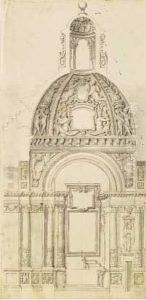Francesco Buonamici Paintings
Francesco Buonamici was an Italian architect, painter, and writer, born in Lucca, Italy, in 1533. He was a prominent figure of the Renaissance period, contributing significantly to the architectural and artistic movements of his time. Buonamici is less known compared to his contemporaries, yet his work had a considerable impact on the development of architectural and artistic practices in Italy and beyond. Throughout his career, Buonamici demonstrated a remarkable ability to blend innovative design with classical elements, which became a hallmark of his style.
Buonamici's education and early career are not well-documented, but it is known that he was active during a time when the Renaissance was in full bloom, a period marked by a rebirth of classical antiquity and an emphasis on the humanistic values of art. He worked in various cities in Italy, including Florence, where he was influenced by the works of other Renaissance masters. Buonamici's contributions to architecture include several notable buildings and structures that reflected the elegance and balance characteristic of Renaissance design. His work as a painter, though less documented, showed his versatility and his keen eye for detail and composition.
In addition to his architectural and artistic pursuits, Francesco Buonamici was also an accomplished writer. He authored several texts on architecture, which were influential in disseminating the ideas of the Renaissance throughout Europe. His writings not only provided insights into the principles of Renaissance architecture but also offered practical advice on construction techniques, thereby influencing both the theory and practice of architecture in the late Renaissance period.
Francesco Buonamici's legacy is that of a multifaceted artist who managed to leave a lasting imprint on the worlds of architecture, painting, and literature. Despite facing the challenge of being overshadowed by more famous contemporaries, Buonamici's work contributed to the richness of the Renaissance and its enduring influence on subsequent generations of artists and architects. He died in 1603, leaving behind a body of work that, though not as widely recognized, is valued for its contribution to the Renaissance's artistic and intellectual heritage.
